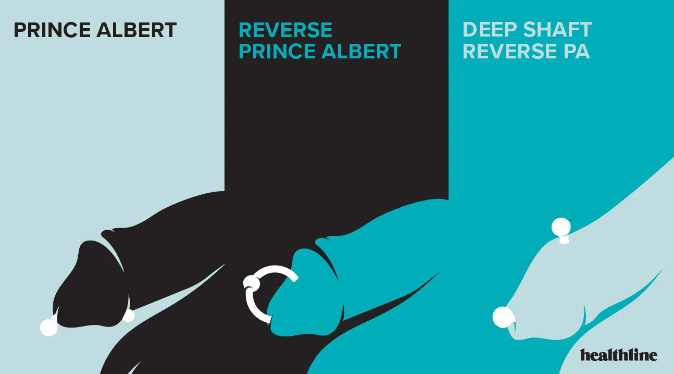Everything You Should Know Before Getting a Prince Albert Piercing

Prince Albert piercings are known to heighten nerve stimulation during sexual activity or masturbation. However, they also carry risks of infection or injury for both you and your partner. Proper planning and aftercare are crucial.
The Prince Albert (PA) piercing is one of the most prevalent penis piercings. It involves inserting jewellery, such as a barbell, through the urethra opening and out of the underside behind the head of the penis (glans).
Are there different variations?
Yes, there are two other popular types:
- Reverse PA: This piercing goes through the urethra and exits from the top of the shaft, behind the head, instead of beneath it.
- Deep shaft reverse PA: This piercing emerges from the top of the shaft much farther down, distant from the head.
What does it entail?

Glans or shaft piercings like the PA can move around and stimulate penile tissue during various sexual activities, enhancing pleasure. For instance, the PA wand can be used for sounding, where your partner places jewellery in their mouth and hums, vibrating the entire penis and offering intense pleasure.
For your partner’s pleasure, any type of PA piercing can stimulate more of their vaginal or anal nerves during sexual intercourse. The reverse PA is particularly adept at stimulating the clitoris and enhancing your partner’s pleasure.
Is it suitable for everyone?
Most people with a penis can get a PA piercing. However, foreskin might cause discomfort as jewellery can rub against it when flaccid. Additionally, you may need to adjust your urination technique to prevent spraying through the new urethra openings. Exercise caution as piercings on the glans or shaft may pierce through condoms.
What types of jewellery are used?
Common jewellery options for a PA piercing include circular barbells, captive bead rings, straight barbells, bent barbells, and PA wands. Materials like surgical titanium, biocompatible polymers, niobium, gold, and platinum are often recommended for their hypoallergenic properties and durability.
How much does it usually cost?
The cost of a PA piercing can vary widely, ranging from around £40 to several hundred pounds at reputable studios. Factors influencing the cost include the complexity of the piercing and the quality of the jewellery.
What is the piercing procedure like?
You don’t need to be erect to undergo a PA piercing. During the procedure, your piercer will sterilise the area, mark the entry and exit points, insert the needle, and then put in the jewellery. The process typically takes a few seconds.
Does it hurt?
Pain levels vary among individuals, but a PA piercing may be more painful due to the dense nerve endings in the penis. However, the procedure is brief, and distractions or deep breathing can help manage discomfort.
What are the associated risks?
PA piercings carry risks such as injury to your partner’s tissues during intercourse, increased risk of STIs, penile tissue damage, infection, urinary tract infections, and rejection. Proper discussion with your piercer regarding these risks is essential.
How long does it take to heal?
A PA piercing typically heals within 2 to 4 weeks with proper aftercare. However, healing time may vary depending on individual factors and adherence to aftercare instructions.
What are the aftercare requirements?
Good aftercare is crucial for successful healing. Proper aftercare includes covering the area, using saline solution for cleaning, avoiding tight clothing, abstaining from sexual activity until fully healed, and following specific guidelines provided by your piercer.
What symptoms should I watch for?
While some pain and swelling are normal, symptoms such as redness, severe swelling or pain, discharge, and signs of rejection require attention from your piercer or doctor.
How long will a healed piercing last?
The longevity of a PA piercing varies among individuals, ranging from a few months to over a year. Proper care and adherence to aftercare instructions contribute to the longevity of the piercing.
How do I change or retire the jewellery?
Wait until the piercing is fully healed before changing jewellery. If unsure, consult your piercer. If changing it yourself, ensure proper hygiene and follow the steps provided by your piercer. If retiring the piercing, follow specific instructions from your piercer or doctor.
In conclusion, a PA piercing can enhance sexual pleasure but requires careful consideration, planning, and aftercare to minimise risks and ensure successful healing. Consulting with an experienced piercer and following their guidance is essential for a safe and satisfying piercing experience.
- The Ultimate Guide to CBD Edibles Comprehensive Review By Botany Farms - June 22, 2024
- Everything You Should Know Before Getting a Prince Albert Piercing - April 9, 2024
- The Comprehensive Guide to the Benefits of Magnesium - October 17, 2023
